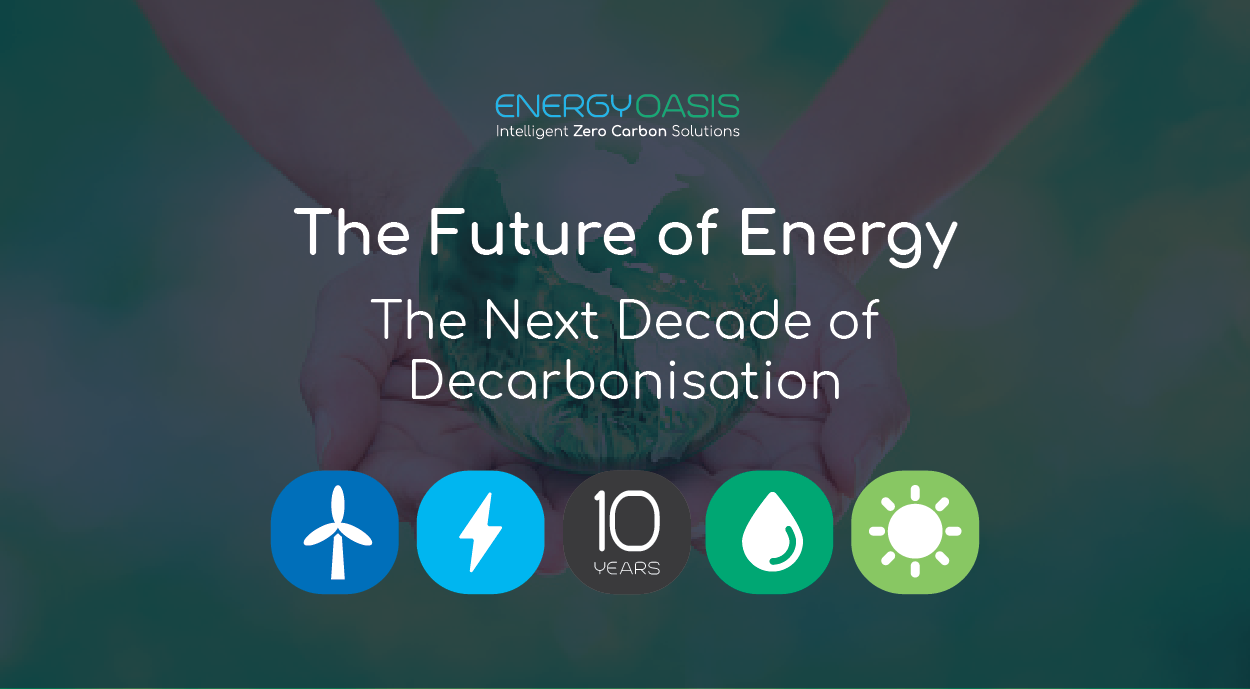The Future of Energy: The Next Decade of Decarbonisation
As Energy Oasis commemorates a decade of decarbonisation, it's an opportune moment to cast our gaze towards the future. Throughout this time, we have been at the forefront of intelligent zero-carbon energy solutions, with a focus on energy reduction, monitoring, control, compliance, and generation. Now, we eagerly anticipate the pivotal energy management trends that will transform our concept of an energy oasis into a tangible reality.
Net Zero Countries
This year Portugal set a record for running on renewable energy for 6 consecutive days! How far off are we from a fully renewably powered country? This trend of running purely on green energy is here to stay and we believe the records will only continue to be broken over the next decade.
It’s predicted that renewable energy could supply up to 80% of the world's electricity by 2050, with the remaining 20% coming from natural gas and nuclear power. Renewable energy currently accounts for 15% of the world's total energy consumption. However, in the coming decade, we are poised to witness an unparalleled global shift towards renewable sources. As the world collectively moves away from fossil fuels, alternative energy options like solar, wind, hydro, geothermal, and hydroelectric power are primed to take the spotlight. This transition signifies a pivotal moment in our journey towards a sustainable and greener future.
Imagine a world where the majority of our energy is derived from clean, sustainable sources. That's the green energy oasis we are working towards.
The Emergence of Microgrids and Community Energy Projects
The energy landscape of the future will be marked by decentralisation. Microgrids - small-scale power grids that can operate independently or in conjunction with the area's main electrical grid - are gaining traction. They offer resilience, flexibility, and can be tailored to local needs.
Community-owned energy projects are on the rise. These initiatives empower local communities to generate their own renewable energy and contribute to a more sustainable environment. They not only provide a boost to local economies but also foster a sense of community ownership and responsibility towards energy generation and conservation.
The Rise of Green Hydrogen in Agriculture & Industry
While electric vehicles (EVs) are an important part of the renewable energy solution, they have limitations, particularly for farming. For instance, the long charging times and limited range of EVs can be a challenge for farmers who need machinery operating around the clock. Imagine a world where farmers can generate their own green energy and store it in the form of hydrogen on their land. This isn't just a theoretical concept; it's a reality that's taking shape right now.
The potential of green hydrogen in agriculture is immense. Even the waste generated from agriculture can be used to produce green hydrogen, revolutionising both energy generation and waste management. With the ability to be produced on-site and stored for use when needed, green hydrogen provides a flexible and efficient energy solution.
Technology plays a crucial role in facilitating this shift towards green hydrogen. Companies like Enapter are at the forefront of this revolution, developing scalable and efficient electrolyser systems that enable green hydrogen production. The technology is not just for agricultural and industrial vehicles as JCB are proving! The company has developed a 4.8-litre, 55kW diesel block engine that runs on hydrogen fuel, housed in a Mercedes Sprinter van. The hydrogen is stored in high-pressure tanks and fed into what appears to be a standard engine. With technology like this, the transition to green hydrogen becomes not just feasible, but practical and sustainable.
AI Energy Monitoring and Efficiency
At the core of all our projects lies the pursuit of energy efficiency optimisation through energy monitoring and reduction. We currently monitor real-time energy usage to minimise waste and optimise consumption. With the continuous advancements in digital technology and the remarkable capabilities of artificial intelligence, specifically in pattern recognition, energy monitoring and reduction is poised to become a highly accessible and perfected science within the next decade.
Demand-side management is another trend that will benefit significantly from this advancement. By adjusting consumer demand for power instead of increasing supply, we can effectively manage energy consumption during peak hours. This approach not only reduces energy costs but also alleviates stress on the grid.
Looking Forward to an Energy Oasis
The forthcoming decade holds the promise of a lush green energy landscape, where renewable energy becomes the standard, green hydrogen powers our farms and vehicles, and technology paves the way for efficient and sustainable energy solutions. Additionally, microgrids and community-owned projects decentralise and secure energy production.
At Energy Oasis, we are committed to supporting this vision. We believe in the power of green hydrogen and its potential to transform the energy landscape. Are you ready to be part of this green energy revolution?


